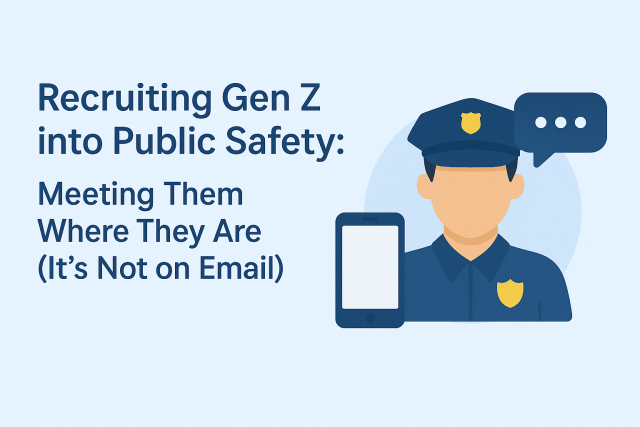The issue of police staffing has become a pressing concern across the nation and we continue to hear about significant issues in some agencies and frankly, this doesn’t have to occur. After 400+ recruiting campaigns, we know that the so called recruiting “crisis” is not accurate and we have a burden to help struggling agencies. The Pittsburgh Police Department was recently in the news because they lost 103 officers last year alone and in previous years, it wasn’t much better. Doug Larsen, the COO of SAFEGUARD Recruiting recently spoke to Travis Yates about this trend and what can be done about it.
The Decline in Officer Numbers
In 2024, Pittsburgh reported a record number of officers leaving the force, surpassing any previous year in the last decade. The city, which historically maintained around 900 officers, saw its numbers drop to approximately 750 by the end of 2023, and an additional 105 officers left in the early months of 2024. This marks a staggering decline of over 25% from full staffing levels.
While many departments face similar challenges, it’s essential to understand that Pittsburgh is actively seeking solutions. The reality is that the loss of officers often relates to a mix of factors, including retirements, job dissatisfaction, and an increasingly transient workforce. Agencies that fail to stay ahead of these trends risk compounding their staffing issues.
Understanding the Attrition Rates
Normal attrition is expected in any law enforcement agency. For a department like Pittsburgh, it’s not unusual to lose 50 to 75 officers annually due to retirement. However, the recent spike in departures suggests deeper issues within the department. If the trend continues, they could face even more significant staffing shortages in the coming years, potentially reaching 500 fewer officers within a few years if left unaddressed.
One of the critical challenges is the time it takes to recruit and train new officers. The process can take anywhere from one to two years from initial contact to when an officer is ready to hit the streets. Thus, departments must act quickly to avoid falling further behind.
Compounding Challenges in Recruitment
When a police department is already understaffed, the ability to effectively recruit becomes severely hampered. With fewer personnel available, existing officers are often asked to take on extra duties, leading to burnout and further attrition. Moreover, departments may find it challenging to promote from within, as they cannot afford to lose even more patrol officers.
The situation becomes a vicious cycle: as staffing levels drop, the workload increases for remaining officers, which can lead to job dissatisfaction and even more officers leaving. To break this cycle, departments need to adopt a proactive recruitment strategy that addresses current staffing shortages while preparing for future needs.
Developing a Long-Term Recruitment Strategy
For departments like Pittsburgh, it’s crucial to rethink their recruitment approach. A comprehensive, long-term strategy should include not just immediate hiring goals but also a sustainable plan for the future. If we consider that Pittsburgh might currently be down by 300 officers, simply aiming to hire that number in one year is unrealistic.
Instead, a phased approach could be more effective. For instance, if the goal is to hire 400 officers over four years, that breaks down to an average of 100 hires per year. This strategy allows the department to manage the onboarding process more effectively, ensuring quality candidates are brought into the force without overwhelming the existing staff.
The Importance of Quality Over Quantity
Recruitment is not just about filling vacancies; it’s about attracting high-quality candidates. A common misconception is that hiring a large number of candidates quickly will solve staffing shortages. However, it’s essential to filter candidates effectively to ensure they meet the department’s standards.
For example, to successfully bring in 300 new hires, a department might need to engage with around 20,000 potential candidates. This number accounts for those who may not pass the various stages of the hiring process, such as physical tests or background checks. Thus, having a robust recruitment strategy is vital to ensure that the department can maintain high standards while filling its ranks.
Effective Recruitment Techniques
To address the staffing crisis, police departments should consider employing specialized recruitment strategies. Traditional marketing methods, such as billboards and commercials, will not effectively generate the interest needed for recruitment. Instead, departments should focus on direct engagement with potential candidates through targeted digital campaigns.
One effective strategy is to utilize social media platforms where potential recruits are active. By creating engaging content that resonates with the target audience, departments can spark interest in a law enforcement career. Additionally, leveraging technology to streamline the application process can make it easier for candidates to apply and engage with the department.
Custom Campaigns for Recruitment
Implementing custom recruitment campaigns tailored to specific demographics can significantly enhance a department’s ability to attract qualified candidates. These campaigns should clearly communicate the benefits of working in law enforcement, including career advancement opportunities, community impact, and the support available to officers.
Moreover, departments should ensure that prospective candidates know what to expect throughout the hiring process. Clear communication about application requirements, timelines, and the overall experience can help reduce drop-off rates and keep candidates engaged.
Collaboration and Support
It’s important for law enforcement agencies to recognize when they need external support to enhance their recruitment efforts. Collaborating with specialized recruiting firms can provide the expertise needed to navigate the complexities of modern recruitment.
These firms can help identify the best candidates, manage the recruitment process, and implement effective strategies that align with the department’s goals. By outsourcing recruitment to experts in the field, agencies can focus on their core responsibilities while ensuring they have the staff needed to serve their communities effectively.
Changing the Narrative Around Recruitment
One of the significant barriers to effective recruitment is the prevailing narrative surrounding the so-called “recruitment crisis.” Many departments have relied on this narrative as an excuse for their staffing shortages. However, it’s time to shift the focus from blame to action. Law enforcement agencies must adopt a proactive mindset that emphasizes strategic planning and innovative recruitment techniques.
As we move further away from the events of 2020, it’s essential to stop using the pandemic as a reason for staffing challenges. Instead, agencies should focus on building a sustainable workforce that meets the needs of their communities.
Conclusion: A Path Forward
The staffing crisis facing police departments, particularly in cities like Pittsburgh, is a multifaceted issue that requires a strategic and proactive approach. By acknowledging the challenges, developing a long-term recruitment strategy, and embracing innovative techniques, law enforcement agencies can begin to turn the tide on staffing shortages.
With the right mindset and resources, police departments can not only fill their ranks but also ensure they attract high-quality candidates dedicated to serving their communities. It’s time for departments to take action and redefine what effective recruitment looks like in today’s world.
For a free analysis of your Recruiting Process with detailed solutions, contact SAFEGUARD Recruiting Today.



